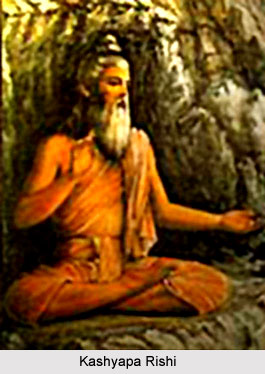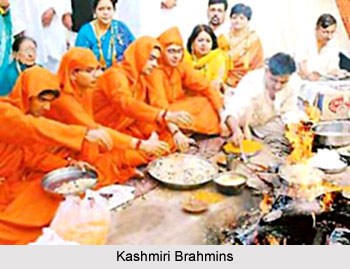 Origin of the Kashmiri people has been explained in a number of myriad ways. The true people of Kashmir valley are physically a fine race, tall and well-built. They are an ancient race with complexions varying from olive to a ruddy and fair hue. The features of all are well-shaped and regular. Lively and intelligent, the people of the Valley are full of fun and fond of amusement. The beauty of their women has been long and much celebrated. Numerous explanations, some of them verging upon the fantastic, have been advanced to account for their origin. For example, one theory puts them down as being descendants of one of the lost tribes of Israel, this perhaps being suggested because of the Jewish cut of features to be found among some of the older people who look the patriarchal type.
Origin of the Kashmiri people has been explained in a number of myriad ways. The true people of Kashmir valley are physically a fine race, tall and well-built. They are an ancient race with complexions varying from olive to a ruddy and fair hue. The features of all are well-shaped and regular. Lively and intelligent, the people of the Valley are full of fun and fond of amusement. The beauty of their women has been long and much celebrated. Numerous explanations, some of them verging upon the fantastic, have been advanced to account for their origin. For example, one theory puts them down as being descendants of one of the lost tribes of Israel, this perhaps being suggested because of the Jewish cut of features to be found among some of the older people who look the patriarchal type.
According to the legend, as mentioned in the Rajatarangini and the Nilamatpurana, the Valley which was a vast mountain lake was drained by Kashyapa Rishi who imported Brahmins and sages from India to live here. In those prehistoric days, it is said that tribes of Pishachas and Takshas were living here. They used to give trouble to these Brahmins, who in order to escape their wrath followed the instructions of the author of the Nilamatpurana of giving presents of food etc. to them off and on to win their friendship. The festival of Khichiamavas is still observed by the Kashmiri Brahmins on the 15th day of the dark fortnight of Poh (December-January) when Khichri is cooked in every house and kept outside in new earthen pots as present to the Pishachas and Takshas.
 Prior to the advent of Islam in the 14th century, the population of Kashmir was not entirely Brahmin. There are to be found the names of several sects namely Nishads, Khashas, Dards, Bhuttas, Bhikshas, Damras, Tantrins etc. who constantly gave trouble not only to the rulers of the country but, also to the Brahmins. How and where they came from is a long study in itself.
Prior to the advent of Islam in the 14th century, the population of Kashmir was not entirely Brahmin. There are to be found the names of several sects namely Nishads, Khashas, Dards, Bhuttas, Bhikshas, Damras, Tantrins etc. who constantly gave trouble not only to the rulers of the country but, also to the Brahmins. How and where they came from is a long study in itself.
That the Kashmiris form a branch of the race which brought the languages of Indo-Aryan type into India, is a fact established by the evidence of their language and physical appearance. But the period of their immigration and the route they came by are still disputed points among the authorities on the subject. Suffice it to say that they have till now preserved a distinct form of culture and in ancient times produced a civilisation which would have made a greater mark in the world`s history, had there been a possibility of better and easier intercourse with the rest of the world.
Yet during the long and chequered history of Kashmir, there have been periods when the people came into contact with the Indian, Roman, Greek and Persian civilisations resulting in a happy blending of cultures which were tolerant and sympathetic towards the ideas and beliefs of others. The Kashmiris demonstrated it practically. When for instance, Brahminism replaced the earliest forms of Naga worship there was the least tinge of religious persecution. On the other hand the Nagas are even to this day venerated by the general populace in the various springs. Buddhism came into dominance in the second century B.C. and one can find that Buddhist kings and ministers built Viharas and temples dedicated to Hindu as well as to the Buddhist deities. And when Buddhism had its day, the change was marked by a conspicuous absence of force or bigotry. Similarly in the 14th century A.D. Islam entered Kashmir the broadminded Kashmiris welcomed its exponent, the great Shah Hamadan, with open arms and the synthesis of Hindu and Islamic religious thought found its greatest exponents in Lalleshwari and Sheikh Nur-ud-Din who are even to this day venerated by Hindus and Muslims alike.



















